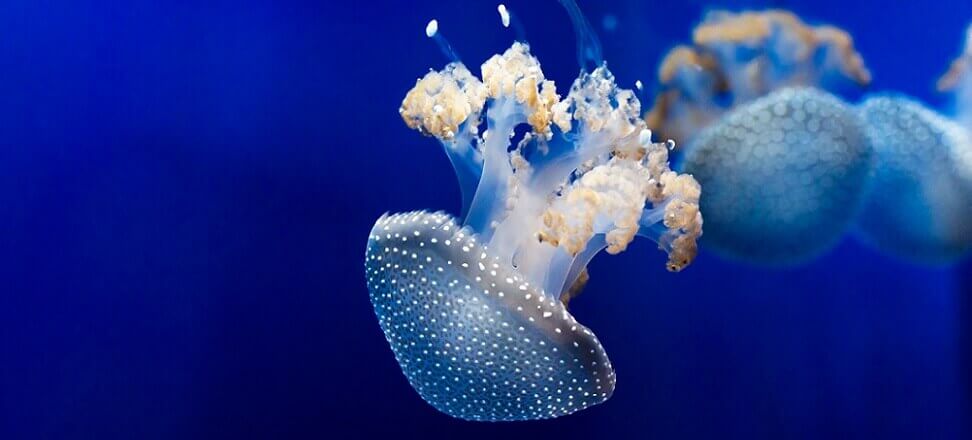Bioluminescence, the phenomenon of light emission by living organisms, has long fascinated scientists and nature lovers. Recent studies indicate that the first luminous organisms appeared in the oceans as early as half a billion years ago, and this is much earlier than previously thought. The research sheds new light on the evolutionary adaptations that allowed these organisms to not only survive, but to function in the oceans.
Bioluminescence
Bioluminescence is the phenomenon of natural light emission by some living organisms, which occurs due to the presence of special chemical compounds, usually luciferin (pigment) and luciferase (enzyme). The biochemical reaction between these compounds leads to the production of light. Bioluminescence occurs in various groups of organisms, including some bacteria, fungi, insects (such as skylights), and marine organisms such as jellyfish, some fish and squid.
In the deep-sea ecosystem, bioluminescence performs a number of key functions, which we have written about more extensively in the articles: Deep in the dark – how do you live where the sun doesn’t reach? and Bioluminescence – the mysterious light in the ocean .
However, we remind you that organisms use it, among other things. To:
- Attracting mates – in the darkness of the ocean, light can serve as a signal to potential mates, enabling them to find each other for reproduction;
- Defenses against predators – Some organisms use bioluminescence to confuse or deter predators. For example, some squid species release luminous ink to confuse their attacker and escape;
- Hunting – Some predatory species use light to attract their prey. For example, deep-sea lynx fish have special lanterns that emit light to serve as bait for smaller fish.
Light in the deep: the latest discoveries
Scientists have already established that bioluminescence is a trait with ancient origins – about 267 million years ago, a small group of crustaceans were the first to start emitting their own light. However, the latest discovery further distances the origins of bioluminescence by another ca. 270 million years old. According to researchers, already ca. 540 million years ago, an ancient group of corals developed the ability to produce their own light [1].
This discovery not only expands the boundaries of our knowledge of the origins of bioluminescence, but also sheds new light on the evolutionary advantages this phenomenon may have offered to primitive organisms.
We had no idea it would be this old,” Danielle DeLeo, an evolutionary marine biologist at Florida International University in Miami and author of the study. The fact that this trait persists for hundreds of millions of years tells us in truth that it provides some kind of fitness advantage.
Recent studies also indicate that bioluminescence mechanisms may have evolved independently at least 100 times in different groups of organisms. Even so, it is not always clear why bioluminescence has evolved in the groups in question.
Discoveries from genetic analysis and fossils
During the study, DeLeo and her team analyzed a large dataset of genetic sequences and rare documentation of octocoral fossils to reconstruct the evolutionary history of these animals. Then, using a computer model, they assessed the probability that the ancestors of these species were bioluminescent.
The model’s results showed that the common ancestor of all octocorals, living about 540 million years ago, probably exhibited bioluminescence. This finding suggests that luciferase-based biofluorescence emerged early in evolution and was later lost in the descendants of octocorals, which did not exhibit this trait. So bioluminescence has existed at least since the Cambrian period (about 540 – 485 million years ago), when the first animal species developed the ability to develop eyes. This is a surprising discovery, since bioluminescence has often changed over evolutionary time. Luciferase is only one of the mechanisms by which animals produce light. Other organisms use different chemical processes to achieve this effect. In the case of octocorals, the luciferase system may have evolved as a defense mechanism against oxidative stress, and was later used in interspecies communication.
Ocean mysteries – another ocean mystery solved
Genetic and fossil analysis has been crucial to understanding the evolution of bioluminescence. By tracing genetic changes along with fossil records, it has been possible to reconstruct the evolutionary history of octocorals and establish that bioluminescence has existed for half a billion years. It’s a significant discovery that expands our knowledge of primordial life forms and evolution, but also a reminder that many of the ocean’s mysteries still remain a mystery to us.
[1] DeLeo, DM, Bessho-Uehara, M., Haddock, SHD, McFadden, CS and Quattrini, AM Proc. R. Soc. B 291 , 20232626 (2024).

 Polski
Polski






